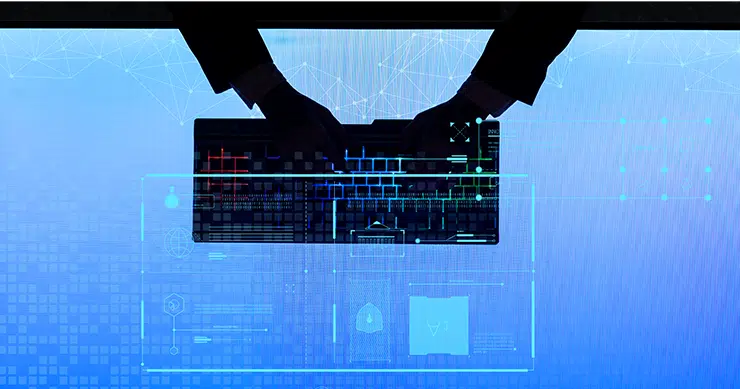Whether you are an SMB looking for advice as to where to start with security vulnerability management or an IT professional looking to develop and mature your security programs, read on to discover how you can help protect your organization from potential security threats with the TOP 5 vulnerability mitigation strategies brought to you by the Centraleyes team.
Cybercrime is on the rise at a startling rate. According to Purplesec, ransomware attacks have increased by 350% since 2018, zero-day attacks were up by 55% in 2021, and out of the 30 million SMBs in the USA, over 66% have had at least 1 cyber incident between 2018-2020.
Vulnerability management is a critical element of information security. The combination of publicly available lists of vulnerabilities and threat actors actively seeking to exploit them, obligates your organization to have a solid vulnerability management plan in place. The technology surrounding information security is developing at a rapid pace and vulnerabilities are inevitable. Managing vulnerabilities is a cyclical process- you are never done. Another reason to have a great system in place!
Join us as we navigate five valuable vulnerability management best practices. But we won’t stop there! We’ll analyze some broader concepts in cyber security like cybersecurity risk mitigation and establishing a comprehensive vulnerability management program. After all, vulnerability scanning and mitigation is only one step in implementing a holistic risk mitigation strategy.

STRATEGY # 1 – ASSET DISCOVERY & VULNERABILITY IDENTIFICATION
You need to know what you are protecting. The first step to take towards vulnerability mitigation is to deploy a discovery scan. This will catalog every device connected to your network and list every operating system, mapping those systems to their IP addresses, and enumerate the open ports and services on those systems.
You can then run vulnerability scanning on each of these devices to check for openings. Determine your network’s weaknesses and use this information to reduce the attack surface available for exploitation.
Scheduling regular discovery scans will ensure you include any new devices that are added to the network at a later date and continuously ensure your networks are covered.
Scans are not the only way to identify vulnerabilities. A thorough cybersecurity risk assessment is an essential and comprehensive way to identify vulnerabilities in your organization that a scan alone cannot catch. A cyber risk assessment will identify and prioritize your assets, show how well your controls are working, identify gaps and offer insights into cybersecurity risk mitigation. Using a dedicated cybersecurity risk management platform can help you to stay informed of new vulnerabilities and threats.
STRATEGY # 2 – IMPLEMENT SECURITY CONTROLS
Once you have identified your specific vulnerabilities, it’s time to put mitigating security controls in place. These will be influenced by your security goals, priorities and budget, but it is recommended to be guided by an established cybersecurity framework, relevant to your industry, which will comprehensively list the security controls out there.
Often, there are laws and regulations dictating the security controls you are obliged to have in place, according to the type of operation you run, so be sure to determine that you have deployed those. There are different frameworks covering information security, data privacy, federal requirements, some broader frameworks and more industry-specific detailed guidance.
The most well-known and popular frameworks include:
ISO 27001, NIST CSF, NIST 800-171, PCI DSS, CMMC.
There are 3 types of internal controls to consider: preventative, corrective and detective. Controls are often categorized as administrative, technical or physical. Extensive lists can be found online. Some of the most important controls to consider will fall into these 4 categories:
- Technical Controls: This covers both hardware and software that is used to protect systems, networks and organizations. These include firewalls, intrusion detection systems (IDS), identification and authentication mechanisms, password management, and encryption. Endpoint security defenses are an important part of this.
- Physical Access Controls: For example, security guards, perimeter security, video cameras, locks, limited access.
- Compliance Controls: These include the various policies and procedures that an organization is obligated to have in place in order to be compliant with necessary laws and regulations. For example, internal auditing, monitoring, and awareness training.
- Procedural Controls: Procedural controls usually take the form of standard operating procedures (SOPs) and “user manuals” such as an Incident Response plan.
By having the correct controls in place, the demand for vulnerability mitigation will be reduced and opportunities for exploitation will be preempted.
Start Getting Value With
Centraleyes for Free
See for yourself how the Centraleyes platform exceeds anything an old GRC
system does and eliminates the need for manual processes and spreadsheets
to give you immediate value and run a full risk assessment in less than 30 days
STRATEGY # 3 – PATCH MANAGEMENT
As we mentioned before, bugs and vulnerabilities in software are inevitable. “Patches” are mitigations released by the creators of the various software and hardware to fix various bugs discovered. Applying those patches in a timely manner is critical to securing your system. Besides for threat actors taking active advantage of unsecured systems, leaving vulnerabilities unpatched opens your organization up to compliance and regulatory fines.
An effective patch management life cycle is a combination of the strategies mentioned here. Make yourself aware of the typical patch release schedules that the relevant companies tned to go by. Microsoft, for example, has a monthly “patch Tuesday” to look out for. CISA releases regular updates and keeps a catalog of Known Exploited Vulnerabilities. They strongly urge all organizations to reduce their exposure to cyberattacks by prioritizing timely remediation of Catalog vulnerabilities as part of their vulnerability management practice. Work methodically with a list of your product creators and service providers to ensure you are monitoring all relevant releases.
STRATEGY # 4 – CONTINUOUS MONITORING AND CHANGE MANAGEMENT PLANS
A proactive approach to vulnerability management is the most effective way to stay ahead. Unfortunately, this is not the kind of process that is ever complete. Continuous monitoring of security controls and patch releases, regular scanning and analysis of results is needed to ensure you maintain your vulnerability management goals.
Change management is a critical factor in securing your systems and networks. Have policies and procedures in place to ensure that any changes, additions or subtraction (to devices, software and even the human workforce) are accounted for and considered as to how they affect the status quo.
STRATEGY # 5 – INCIDENT RESPONSE
Even with all the preemptive steps and precautions in the world, things can and will still happen.
You will have an easier time reacting to a breach or attack if you have an incident response plan in place. Being able to respond to a threat event quickly and thoughtfully will reduce your exposure, minimize impact and hopefully assist operations to get back to normal as soon as possible. An incident response plan will also ensure all employees and teams know their roles, are ready to act and can efficiently mitigate any issues.
Test your plan regularly and ensure you consider it as part of change management.
These vulnerability management best practices are a healthy and effective way to approach risk mitigation yet the overall process can be overwhelming without the correct tools. Modern risk and compliance management platforms will offer automated tools to streamline the process throughout the cycle. Take advantage of external intelligence, scanning capabilities and automated analysis to help you prioritize your actions.
Moving Beyond Vulnerability Mitigation Strategies,
As we conclude our discussion of vulnerability mitigation strategies, a notable statistic from Edgescan warrants our attention: 12% of all risk-accepted vulnerabilities in 2022 manifested as critical severity in isolation. This revelation should prompt scrutiny of the risk acceptance decision-making process, urging organizations to reconsider the acceptable risk threshold.
As organizations refine their proficiency in vulnerability mitigation, the pursuit of cyber resilience emerges as the logical progression. This journey to resilience extends far beyond vulnerability scanning and mitigation efforts. It encompasses broader programs that fortify the organization’s security posture and mitigate risk.
Adopting industry-relevant frameworks, such as ISO 27001, NIST CSF, NIST 800-171, PCI DSS, and CMMC, becomes a cornerstone in this trajectory. These frameworks provide a structured approach, guiding the deployment of controls across preventative, corrective, detective, administrative, technical, and physical risk categories. They establish a solid foundation, ensuring security measures align with industry standards and compliance obligations.
Centraleyes provides the total solution to vulnerability management. The platform offers cutting-edge automated vulnerability management tools, a high-visibility control dashboard, real-time updates, automated remediation steps and built-in smart questionnaires for compliance with all the industry frameworks. Begin with our easy comprehensive cyber risk assessment to see how Centraleyes can smooth the way to mitigating vulnerabilities and keeping your organization safe and compliant.
Start Getting Value With
Centraleyes for Free
See for yourself how the Centraleyes platform exceeds anything an old GRC
system does and eliminates the need for manual processes and spreadsheets
to give you immediate value and run a full risk assessment in less than 30 days






